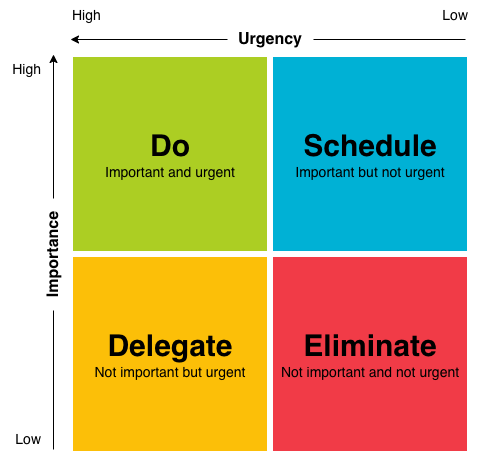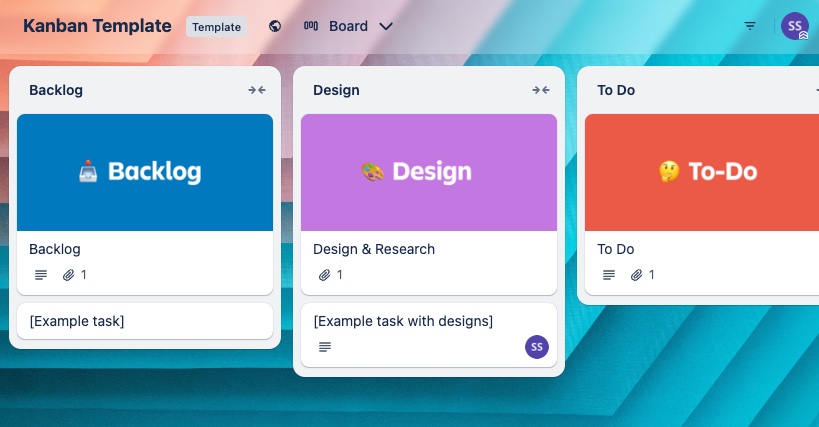10 Proven time management techniques to boost productivity
Struggling to make the most of your day? Discover ten powerful time management techniques that top performers swear by. These practical strategies will revolutionize your productivity and help you reclaim control of your schedule. Ready to transform your daily routine?
- Author
Michael Metcalf

What are time management skills?
Time management skills are the abilities that allow you to use your time efficiently and productively. These skills include prioritizing tasks, setting realistic goals, planning effectively, avoiding procrastination, and maintaining focus.
Good time management involves scheduling, delegating, and eliminating time-wasters. It also requires self-awareness to understand your work patterns and energy levels. Mastering these skills helps you accomplish more in less time, reduce stress, and achieve a better work-life balance.
⏱️ Uncover your level of focus for Time, or your ability to stick to a schedule by answering questions on what motivates you.
Why is time management important?
Time management is a critical skill that can transform your personal and professional life. At its core, time management is about consciously controlling how you allocate your hours and minutes to various tasks and activities.
The psychology behind time management is fascinating. Our brains are wired to perceive time subjectively,¹ which can lead to challenges in estimating how long tasks will take or how we will spend our day. Time management techniques help us overcome our cognitive biases and create a more realistic and efficient approach to our daily activities.
Without effective time management, we often fall into common pitfalls of productivity and well-being. Procrastination, missed deadlines, poor work quality, and increased stress are just a few of the consequences of poor time management. These issues can snowball, affecting our relationships, finances, and overall quality of life. By implementing smart time management strategies, we can avoid these traps, seize opportunities, and create the structure needed for consistent success in our personal and professional lives.
10 Time management techniques that work
We've curated a list of practical, battle-tested time management techniques that can transform your productivity. These strategies have helped countless professionals reclaim their time and achieve more – and they can do the same for you.
While it's beneficial to experiment with different approaches, remember that consistency is key. Find the technique that resonates with you and stick with it to unlock your productivity.
1. The Pomodoro Technique: Work in focused sprints
The Pomodoro Technique, developed by Francesco Cirillo, is a powerful time management strategy that can boost productivity and combat procrastination.
Here's how to implement it:
- Work intensely for 25 minutes
- Take a 5-minute break
- Repeat 4 times, then take a longer 20-minute break
Benefits:
- Improves focus and concentration
- Reduces burnout
- Increases task completion
Chris Chung, a Californian AgTech programmer, shares the benefits he's experienced after five years of using the Pomodoro technique:²
"I notice the difference between my Pomodoro and non-Pomodoro output is huge, perhaps on the order of 1.5 or 2x. Increased productivity on this scale is a life-altering event. With efficiency like this, you can work a shorter day and get more done."
Best tools for timing:
Try apps like Be Focused to track your Pomodoro sessions easily.
Remember, while 25-minute intervals work for many, adjust the timing to suit your workflow. The key is maintaining a balance between focused work and regular breaks.
2.Eisenhower Matrix: Master prioritization
The Eisenhower Matrix, named after President Dwight D. Eisenhower, is your secret weapon for ruthless prioritization.
Here's how to wield it:
Divide your tasks into four quadrants:
- Urgent & Important: Do immediately
- Important, Not Urgent: Schedule
- Urgent, Not Important: Delegate
- Neither Urgent Nor Important: Eliminate
Tips:
- Reassess your matrix daily
- Aim to spend the most time in the urgent and important quadrant
- Be honest about what's truly important
Example:
- Urgent & Important: Finish client presentation (due tomorrow)
- Important, Not Urgent: Plan quarterly strategy
- Urgent, Not Important: Reply to non-critical emails
- Neither: Scroll social media
In a Reddit thread³ discussing the Eisenhower Matrix, one user shared their experience using the tool.
"When I decided to start using it I classified the tasks of my previous week into the matrix, and more than 60% of them where under number 2 (The ones I should delegate...). Now every Monday I organize all my weekly tasks under this matrix and schedule them accordingly into the calendar for that week."

Source: Eisenhower Framework Template
By using this time management technique, you'll focus on what truly matters.
3.Time Blocking: Schedule your way to success
If you've ever felt like you're always putting out fires instead of making real progress, enter time blocking, the time management technique used by high achievers like Elon Musk and Bill Gates.
Gates calls his unique time management technique the Think Week. Annually, he retreats to a secluded cabin, disconnecting from the world to immerse himself in deep, creative thinking.
Founder and CEO of Marlee, Michelle Duval shares her story on the importance of more quiet time.
How it works:
- Divide your day into blocks of time
- Assign specific tasks to each block
- Focus solely on the designated task during its block
Key benefits:
- Increased focus and productivity
- Reduced decision fatigue
- Better work-life balance
Example:
- Start with larger blocks (2-3 hours) and refine as needed
- Include buffer time for unexpected tasks
- Use color-coding for different types of activities

Image source: Todoist Time Blocking
Protect your blocks:
- Turn off notifications
- Communicate your availability to others
- Learn to say "no" to non-urgent requests
Remember, time blocking isn't one-size-fits-all. Experiment with block durations and scheduling to find what works best for your unique work style and energy patterns.
4.The Two-Minute Rule: Conquer Small Tasks Instantly
When you're feeling overwhelmed by a mountain of tiny tasks, the Two-Minute Rule, popularized by productivity guru David Allen, is your ticket to a clearer mind and a tidier to-do list.
The rule is simple: If a task takes less than two minutes, do it now.
Why it works:
- Prevents small tasks from piling up
- Reduces mental clutter and stress
- Builds momentum for tackling larger projects
Implementing the rule:
- Assess each new task as it comes in
- If it's quick, do it immediately
- If not, schedule or delegate it
Real-world applications:
- Respond to that short email
- File that document
- Make that quick phone call
Combine with other time management techniques by using the Two-Minute Rule during your daily review or between Pomodoro sessions to knock out quick wins.
Don't let two-minute tasks constantly interrupt deep work. Batch them for designated times if needed. By developing this simple yet powerful time management technique, you'll keep your workload manageable and your mind clear for bigger challenges. Remember, small actions compound into significant results over time.
5.The Kanban Method: Your visual productivity blueprint
Transform your workflow with the Kanban method, a time management technique that originated in Toyota's 1940s production lines and has since revolutionized task management via tools such as Trello.
In its original form, Kanban was pretty simple. Start by creating at least four columns, each dedicated to different stages of the project:
- Create columns: Backlog, To Do, In Progress, Done
- Use sticky notes or digital cards to represent tasks
- Move tasks across columns as they progress

Image source: Trello Kanban Template
Implementing Kanban for weekly planning:
- Review and update your board every week
- Move priority items from Backlog to To Do
- Limit Work In Progress to avoid overwhelm
Daily Kanban routine:
- Start your day by checking your board
- Choose tasks from To Do column
- Update task status as you work
Tips:
- Use color-coding for different project types or priorities
- Set Work In Progress limits to maintain focus
- Regularly analyze your flow to identify bottlenecks
While a physical board works, try digital options like Trello or Asana for added flexibility and team collaboration.
By using this visual time management technique, you'll gain clarity on your workload, improve team collaboration, and boost overall productivity. Remember, the key is consistent use and regular reviews to keep your Kanban board – and your work – flowing smoothly.
6.The 80/20 Rule: Supercharge your productivity
The 80/20 Rule, also known as the Pareto Principle, is named after economist Vilfredo Pareto. It states that for many events, roughly 80% of effects come from 20% of the causes.
Key insights:
- Not all tasks are created equal
- A few vital activities drive most of your success
- Many tasks contribute little to your goals
Applying the 80/20 rule to your work:
- Identify your high-impact activities
- Prioritize these tasks in your schedule
- Minimize or delegate low-impact tasks
Time management strategies:
- Start your day with your most impactful task
- Regularly audit your to-do list for low-value items
- Learn to say 'no' to non-essential commitments
You can combine it with other techniques. For example, you can use time blocking to schedule your high-impact 20% tasks during your most productive hours.
Remember, it's about working smarter, not harder. By focusing on what truly matters, you'll achieve more significant results in less time, reducing stress and increasing satisfaction.
Don't neglect the '80%' entirely. Balance is key – some low-impact tasks are still necessary for overall success.
7.Eat That Frog: Conquer your biggest challenges first
Funny name aside, Eat That Frog is a time management technique that works wonders at prioritizing and ensuring important tasks are completed first.
The technique was developed by Brian Tracy, and is described in detail in his book Eat that Frog! 21 Great Ways to Stop Procrastinating and Get More Done in Less Time. In this case, the “frog” is the most urgent, difficult, or important task over other tasks.
Cal Newport's Deep Work echoes this idea. This simple habit can dramatically boost your productivity.
Why it works:
- Builds momentum for the rest of your day
- Reduces anxiety about looming difficult tasks
- Ensures high-priority work gets done
Implementing "Eat That Frog":
- Identify your "frog" - the most crucial, challenging task
- Tackle it first thing, before distractions set in
- Move on to less demanding tasks afterwards
Tips:
- Prep your "frog" the night before
- Break big "frogs" into smaller, manageable chunks
- Celebrate your win after eating the frog
Remember, consistently eating your frog builds the habit of tackling challenging tasks head-on.
8.The Ivy Lee Method: Simplify your processes
In our era of productivity apps and high-tech solutions, sometimes the most powerful time management techniques are refreshingly low-tech. Enter the Ivy Lee Method—a century-old approach that proves simplicity never goes out of style. The method was developed in 1918 by productivity consultant Ivy Lee, who taught it to Charles Schwab's executives, transforming their efficiency.
This deceptively straightforward technique has stood the test of time, remaining as relevant and efficient today as it was in the early 1900s. How? By laser-focusing on what truly matters and ruthlessly eliminating the noise from your daily schedule.
The simple yet powerful process:
- At day's end, write down 6 important tasks for tomorrow
- Prioritize these tasks
- The next day, focus on task #1 until it's complete
- Move on to the next task
- Repeat daily
Why it works:
- Limits overwhelm by focusing on just 6 tasks
- Eliminates decision fatigue
- Ensures progress on important work
Benefits:
- Improved focus and concentration
- Increased productivity
- Reduced stress and anxiety
Adapting for modern work:
- Use a digital task manager such as Monday for easy updates
- Set reminders to complete your list each evening
- Share your top priorities with your team for accountability
Combine with the "Eat That Frog" technique by making your most challenging task #1 on your list. By using this time management technique, you'll start each day with clarity and purpose. Remember, the power lies in its simplicity and consistency.
9.Timeboxing: Boost productivity with focused time blocks
Timeboxing is a time management technique that involves setting specific task time limits. It's a time management technique similar to time blocking, however time boxing involves setting a specific, limited amount of time.
In a Reddit thread,4 one user shared:
"Time boxing refers to setting a specific, limited amount of time for a task or activity. For example, you might set a time box of 30 minutes to work on a specific project or to respond to emails. The idea is to stay focused and avoid getting bogged down in a task for too long."
By allocating fixed periods to your work, you can:
- Sharpen focus and minimize distractions
- Overcome procrastination and perfectionism
- Increase productivity and task completion rates
To implement timeboxing effectively:
- Start with realistic time estimates
- Use a timer or timeboxing app such as Motion
- Adjust time blocks based on your experience

Image source: What is timeboxing?
10.Zen to Done (ZTD) approach
Zen to Done, created by Leo Babauta, offers a minimalist twist on traditional time management techniques. This system focuses on:
- Cultivating essential productivity habits
- Simplifying your workflow and reducing stress
- Achieving a balance between productivity and mindfulness
Key ZTD principles:
- Capture ideas and tasks effortlessly
- Make quick decisions on actions
- Focus on one task at a time
Incorporate ZTD into your routine gradually, combining its mindful approach with other time management strategies for optimal results.
Above all, do what works for your unique work style
Matthew Syed writes in Rebel Ideas how, in the mid-1900s, the US Air Force faced an alarmingly high number of airplane crashes.
The root cause was pilot errors stemming from the standardized cockpit design. The measurements of everything in the cockpit (from the seat height to the distance of the joystick from the pilot) were calculated from the 'average pilot,' which you'd expect to cover all bases and include everyone's needs.
The problem is that a pilot with entirely average attributes is incredibly rare. You might have average-length arms but a longer-than-average neck or broader shoulders than the norm but a slightly thinner waist. This means that the 'average man' cockpit ended up being suitable for pretty much nobody and caused a whole bunch of problems for pilots trying to operate the controls.
The fix came with a solution that seems obvious in hindsight - customizable cockpits. In time, everything became adjustable, from the height of the seat to the distance of the joystick from the body. The result? A much more comfortable flying experience, and a massive reduction in accidents.
When it comes to productivity and time management, the same theory applies. None of us are average. We're all made up of unique motivational traits, and what works for one person won't necessarily work for another. The techniques we've been through are fantastic starting points, but your time management journey will start to bear fruit with an experimental mindset. Mix and match techniques, record your results, and you'll soon see just how effective your time management techniques can be
References
- McKie, R. (2013) 'Time Warped: Unlocking the Mysteries of Time Perception by Claudia Hammond – review'. Available at: The Guardian, URL: https://www.theguardian.com/books/2013/may/19/time-warped-claudia-hammond-review
- Chung, C (2017), 'Five Years of Pomodoros', available at URL: https://chrischung.me/2017/11/13/five-years-of-pomodoros/
- Falahil, (2023), 'Escaping the urgency trap. I boosted my productivity with the Eisenhower Matrix', URL: https://www.reddit.com/r/productivity/comments/142cm0b/escaping_the_urgency_trap_i_boosted_my/


